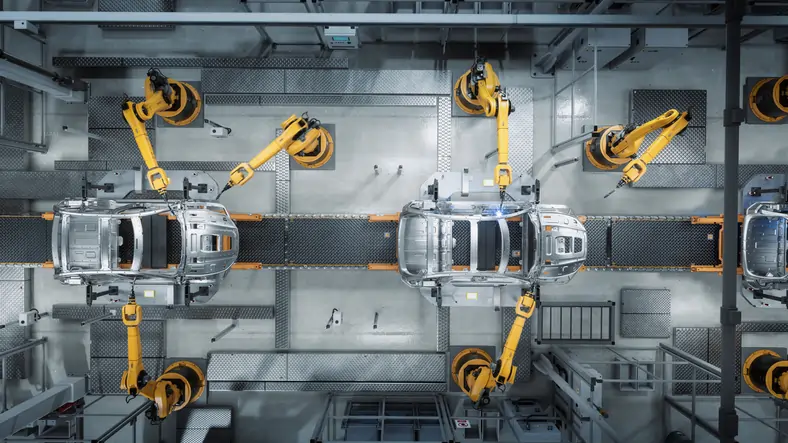

A number of Vehicle Manufacturers (VM’s) have achieved pockets of innovation – from car rental apps to groundbreaking warranty replacement promises and the delivery of a consistent dealer experience for customers. Yet the siloed nature of automotive companies continues to constrain both the pace and scale of change. From parts replacement to efficient fleet operations, why are areas of best practice not deployed consistently across the globe? Why are VMs not actively looking beyond traditional competencies and revenue streams to embrace new opportunities, such as monetising the huge volumes of telematics data they own?
Efficient operational models are no longer enough. VMs need to reconsider brand loyalty, using new levels of service and commitment to transform the customer experience – and they need to do it at scale, explains Alan Glazier, Commercial Director, One Nexus..
Fundamental Industry Change
The automotive industry’s track record in production innovation is unmatched. But facing the most radical cultural change in decades, VMs are moving fast towards a very different operational model that will, by default, demand a strategic expansion from the traditional focus on ‘build and sell’ processes. From the underpinning automotive technology to acquisition and financing, even the structure of sales and Aftersales models, the future shape of the industry remains up for debate.
While electrification appears to meet global government demands for cleaner automotive, the industry’s continued investment in hydrogen highlights concerns regarding the sustainability of current Electric Vehicle (EV) technology. Younger drivers no longer want to own a vehicle – especially given the higher price of EVs – which means the industry needs to find more flexible acquisition options than PCP and PCH.
To date, despite much debate, flexible subscription models remain unaffordable given the current ‘yield and utilisation’ financial model. Plus, of course, with VMs increasingly debating a direct customer relationship and EVs requiring a fraction of the component parts of traditional propulsion vehicles, serious questions are being asked about the future of the dealer network. While VMs are focused on optimising operational efficiency, what is the cost of a failure to invest in customer loyalty or support new demands for flexible vehicle acquisition and usage models? How are VMs planning to attract customers to the brand and ensure the existing dealer network has a viable revenue model?
Innovation to Drive Customer Loyalty
Both short and long-term rental is compelling for the Uber generation and the onus is on VMs to consider how best to make the rental model both simple and effective. Our Rental app, for example, allows customers to onboard themselves, using facial recognition and direct integration with the DVLA to verify their right to drive a vehicle. A liveness facial recognition test – or moving selfie – plus the driver’s complete driving history, including points and disqualifications, provides the verification and ensures full compliance to the insurance policy. Using mobile technology, the entire rental experience is fast tracked for both customer and dealer.
The Rental app builds on technology already used by a number of VMs to enable efficient warranty replacement services for both commercial and personal vehicles. This is another fast-evolving area of brand loyalty, with one of our clients changing the game by moving the provision of replacement vehicles from goodwill to contractual agreement. Combining state of the art technology with call centre expertise, the seamless end-to-end service manages every step of the warranty replacement, from the initiation of hire by the dealer to qualifying the driver, providing insurance and supplying the vehicle. It also handles the inevitable issues with courtesy vehicles, including accidents, parking fines and breakdown.
This groundbreaking approach, used initially within the commercial vehicle sector, ensures each and every commercial customer receives a consistent, identical experience from every dealer in the event of a problem with a vehicle under warranty. Promising a replacement vehicle and delivering that vehicle quickly and efficiently transforms brand loyalty by ensuring commercial customers can be confident about avoiding downtime and meeting their business commitments.
Consistency Through Best Practice
Achieving this level of consistent customer experience across the entire dealer network is becoming an important objective for all VMs. But why stop at the dealer network in one country? Today, VMs have pockets of best practice across the globe that could and should be replicated across every market. Extending the consistent, high quality warranty experience is an obvious step but why not also replicate the super-efficient fleet operations in one country that could deliver significant additional revenue if scaled up globally?
Despite the enormous advances achieved by VMs in recent years, traditional siloed structures – both operationally and geographically – are constraining the innovation now required not only to maximise existing revenue but also to transition to the new market models. Just consider, for example, the enormous untapped revenue stream associated with the vast quantity of telematics data collected by VMs every day.
This data is providing great insight about drivers, cars and journeys which can be used to improve performance and deliver proactive maintenance. But it is also an important source of potential additional revenue. Why not turn a car into a mobile payment device, allowing drivers to pay for fuel, parking or tolls without even leaving the vehicle? The technology is available, it simply takes a commitment to new thinking and innovation. It requires a recognition that telematics data is not the sole preserve of operational teams. By addressing siloed thinking, VMs will not only monetise existing resources but also provide another opportunity for competitive differentiation and brand loyalty.
Conclusion
In a changing market, a different approach is imperative. VMs need to respond now, not only to reflect the changing expectations of younger generations and government driven demands for cleaner automotive technology but, critically, the arrival of new Chinese entrants to the market. These companies are set to add extraordinary new competitive pressures, from radically reduced-price points for EVs to a likely adherence to an agency rather than dealership model and will accelerate the shift in customer expectations and attitudes.
Individual VMs are making incremental changes. One of our major clients’ contractual commitment to provide a courtesy replacement when a vehicle fails under warranty is a significant shift away from the industry norm. Our Rental app recognises the evolving attitudes to car usage within younger generations. These are successful but isolated areas of innovation. The key now is to accelerate this change and ensure every opportunity to improve brand value, customer engagement and revenue generation is achieved consistently across a VMs’ global operation.


